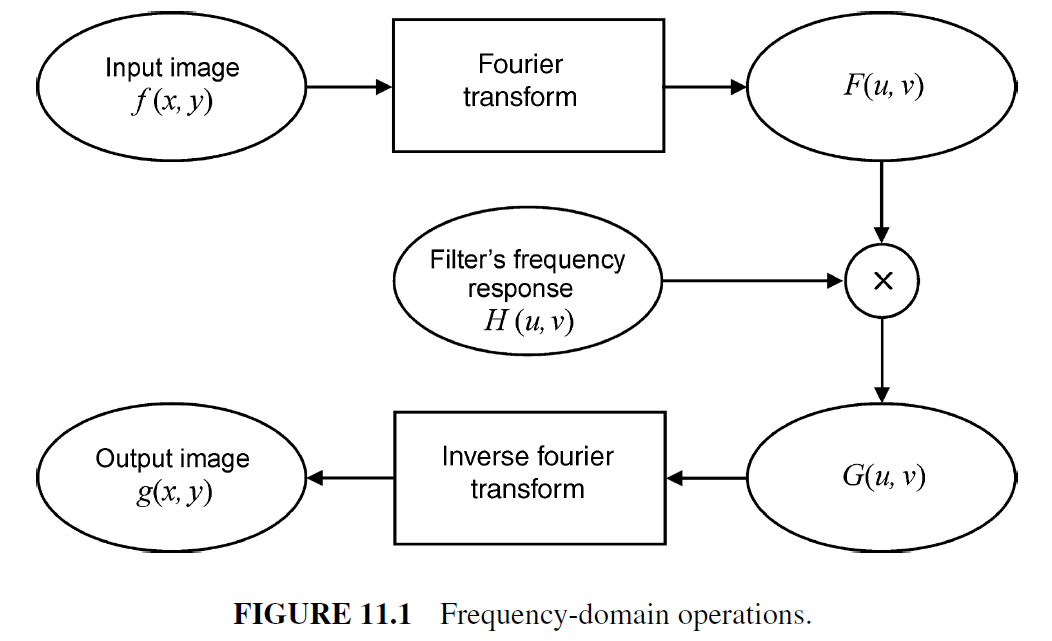17. Frequency Domain Filtering¶
Reading Assignment
Please read chapter 11 of [PIVP].
Signals, or data if you prefer, may be viewed in multiple domains. One dimensional signals that vary with time are considered to be in the time domain. Examples of such signals are acoustic sound waves, electro-magnetic radio waves, or electric voltages traveling though a wire. Two dimensional images are considered to be in the spatial domain. We think of spatial domain images as varying in the space of the monitor or piece of paper that we are using to view the image.
Both time domain and spatial domain data may also be transformed in the frequency domain. We are already familiar with the frequency domain for acoustic sounds. The keys on a piano keyboard are arranged in the frequency domain. The keys to the left produce low frequency tones; whereas, the keys on the right side of the keyboard yield higher frequency tones. The frequency refers to the rate of change. High frequency sounds vibrate at a faster rate than low frequency sounds. Portions of an image with high frequencies are where the image is changing rapidly. For example, the portion of an image showing hair often contains high frequency data. Low frequencies are observed in static portions of an image, such as a flat wall, that shows little change. See if you can identify low, medium, and high frequency data in this picture of a woman with dark hair.
The frequency domain is of interest to our study of image processing for a few reasons.
- An understanding of the frequency domain helps us to understand some important properties of signals and images. An example of this is the phenomenon of aliasing, which will be explained in more detail after we learn more about the frequency domain. Another example is the so called ringing effect that shows up in some processed images.
- Viewing an image in the frequency domain provides additional information about the image contents.
- We already know about filtering images in the spatial domain using convolution. In the frequency domain, we use multiplication, rather than convolution to perform filtering. We can construct frequency domain filters to either pass or reject specific frequency ranges. Such filters may be difficult or impossible to construct in the time or spatial domains. One can exam an image in the frequency domain to determine the desired parameters of a frequency domain filter; whereas, examining an image in the spatial domain would not likely reveal the needed parameters of a spatial domain filter.
- Other applications, such as image and video compression, often process images in the frequency domain.
Figure 11.1 from the text book illustrates filtering in the frequency domain.

Contents:



